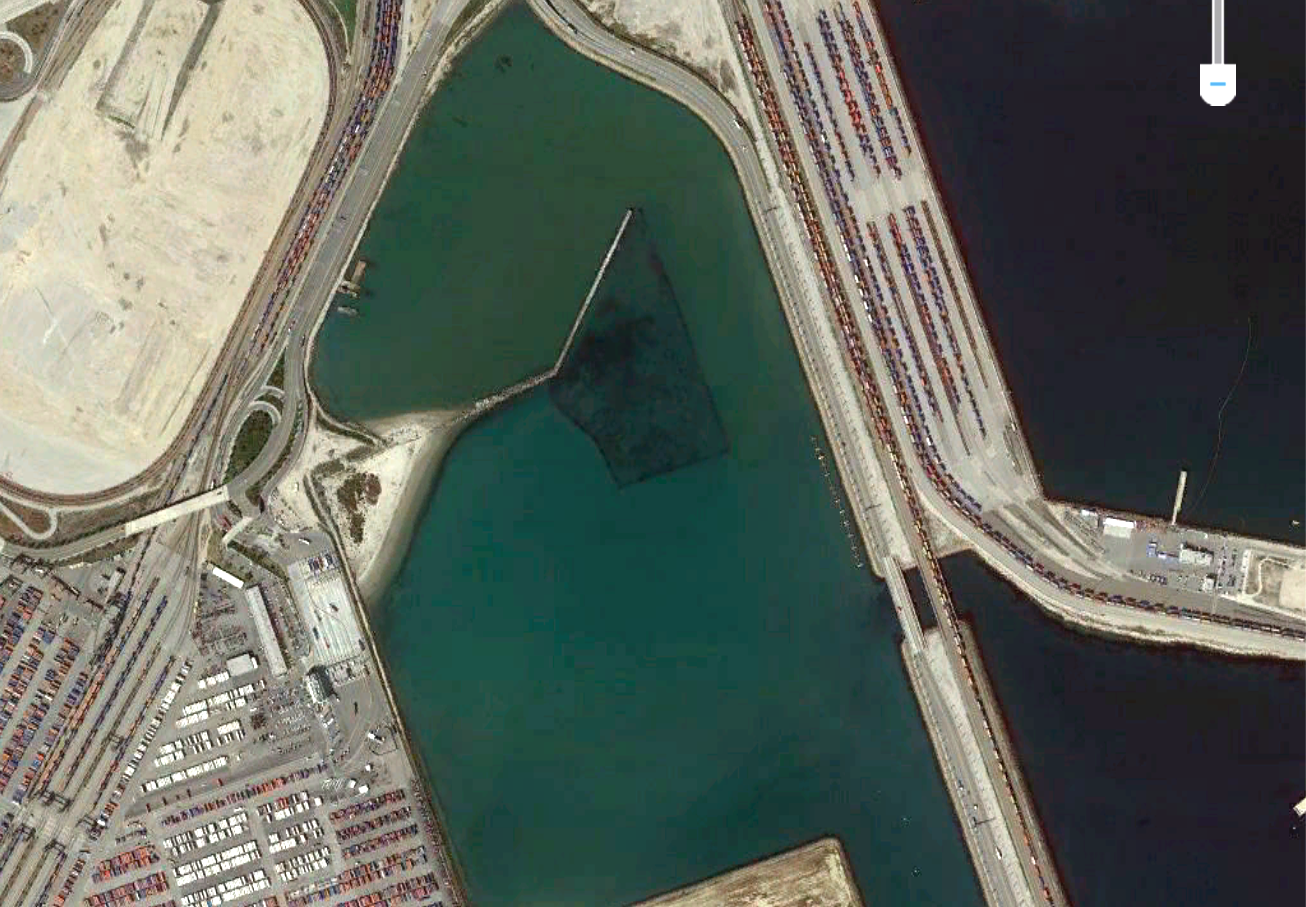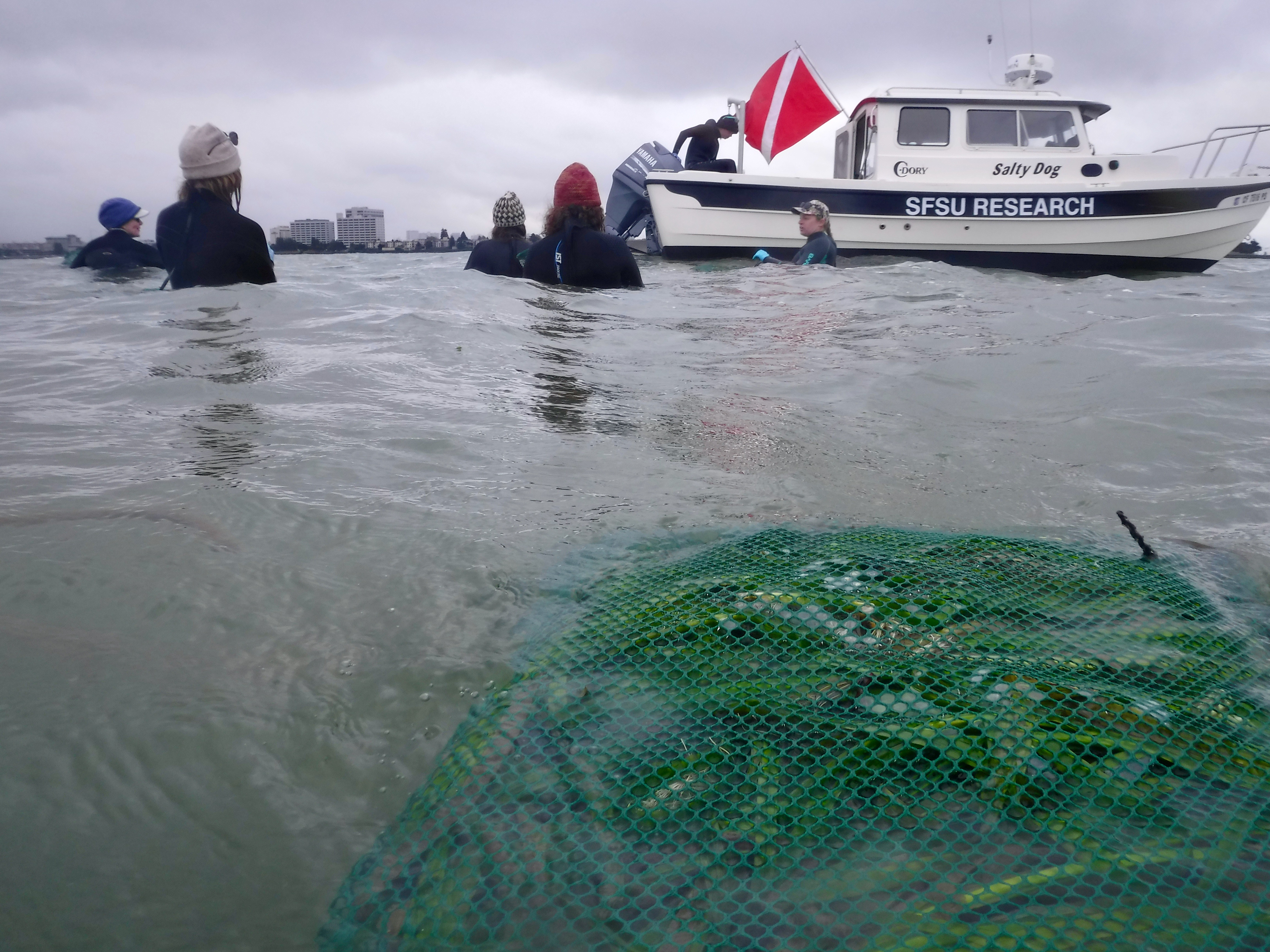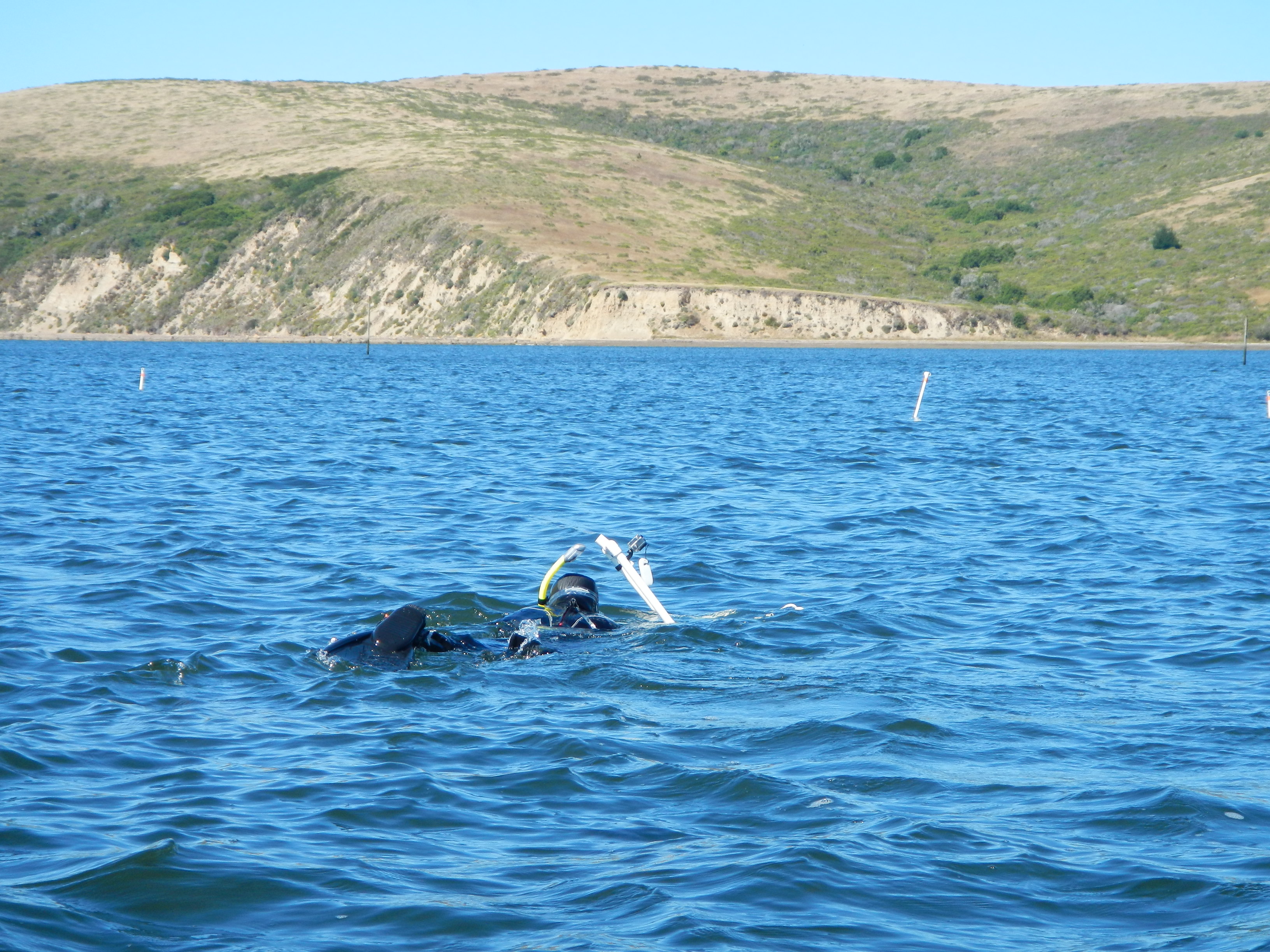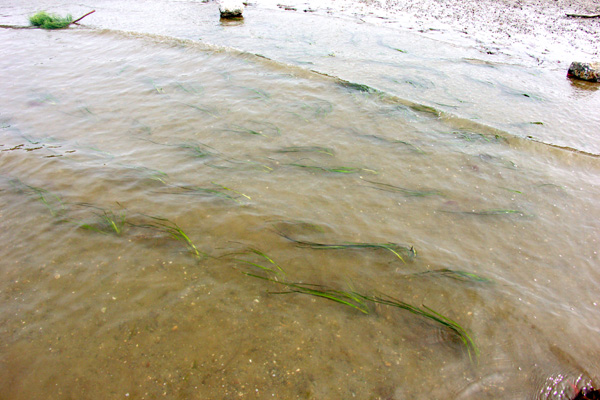Eelgrass is an important foundation species along the U.S. West Coast, supporting a suite of ecosystem services and functions and providing food and shelter for many fishes and invertebrates. In 2018, PMEP published Eelgrass Habitats on The U.S. West Coast: State of the Knowledge of Eelgrass Ecosystem Services and Eelgrass Extent and compiled a geodatabase of eelgrass presence/absence and current and historic extent of eelgrass in 444 estuaries along the U.S. West Coast. In 2020, PMEP commissioned a report to synthesize eelgrass restoration project successes along the U.S. West Coast to identify best practices for eelgrass restoration and mitigation. The authors of the report reviewed and synthesized data from 51 eelgrass restoration (non-mitigation and mitigation) projects from California, Oregon, and Washington. They identified those methods and approaches that resulted in successful restoration. The findings of this synthesis are summarized here on this web page. READ THE FULL REPORT HERE. Support for this project was provided by The Pew Charitable Trusts, the Pacific Marine and Estuarine Fish Habitat Partnership, and Friends of South Slough Reserve. Report authors: Kathryn M. Beheshti and Melissa Ward.
Key findings
Restoration method, while important, is not typically the primary driver of restoration success or failure. Instead, environmental conditions have a substantial impact on whether or not a project will meet desired outcomes. Broadly, the authors recommend that eelgrass restoration follow a 5-step process: assessing site suitability, selecting methods, conducting a pilot restoration, conducting a full-scale restoration, and evaluating restoration success using a reference meadow. The report elucidates the details and motivations for these best practices, while demonstrating their importance in improving knowledge and success of eelgrass restoration across the U.S. West Coast.
Restoration Planning
The five steps in the recommended approach to eelgrass restoration. 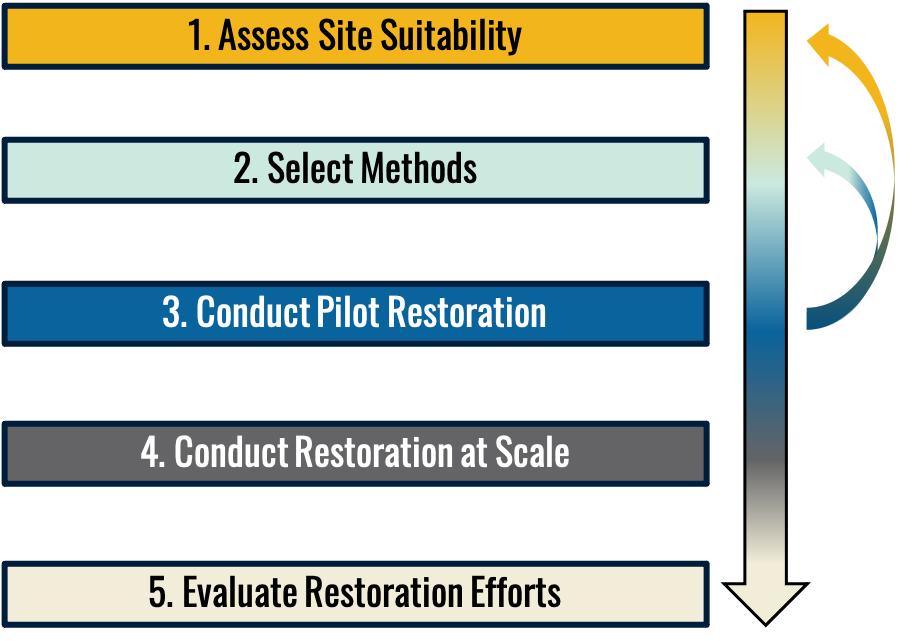 1. Assess site suitability – Evaluate each site where restoration might occur prior to restoration action. When possible, this should include use of a site suitability model, which quantitatively assesses locations likely to be suitable for eelgrass based on known environmental inputs in the model. If no model exists, key criteria to assess include: light, chlorophyll a/nutrients, substrate (grain size), temperature, salinity, water velocity (flow), and elevation. Projects 1, 2, 33, 38-40 2. Select methods – Practitioners should consider the funding, personnel, timing, and environmental characteristics of their site and choose the method that best fits the needs of the project. 3. Conduct pilot restoration – Pilot restoration projects are very valuable in identifying sites with high chance of restoration success. In particular, when practitioners aim to restore larger areas, a well thought out pilot project can be used to identify if or where a follow-up, at-scale restoration project might be appropriate. Pilot projects should include multiple small plots (e.g., 1 to 10 m2) across the sites, ideally spanning numerous environmental gradients (such as depths, currents, or sediment types). In San Francisco, practitioners have seen success in using pilot restoration plots planted in “L” shapes. In the event that pilot restorations fail, transplanting additional pilot plots or testing alternative methods should be conducted prior to moving on to a full-scale restoration. 4. Conduct restoration at scale – Once a suitable site and method has been selected, and pilot restoration has proved successful, practitioners can conduct restoration at-scale. The season and environmental conditions must still be carefully considered. 5. Evaluate restoration efforts – Seasonal monitoring over at least five years is preferred. Restoration monitoring should include at a minimum, shoot densities and areal coverage in both the restored meadow and in a concomitantly monitored reference meadow. Monitoring a reference meadow can provide key insight as to the relative success of the restoration and may also allude to reasons for restoration failures.
1. Assess site suitability – Evaluate each site where restoration might occur prior to restoration action. When possible, this should include use of a site suitability model, which quantitatively assesses locations likely to be suitable for eelgrass based on known environmental inputs in the model. If no model exists, key criteria to assess include: light, chlorophyll a/nutrients, substrate (grain size), temperature, salinity, water velocity (flow), and elevation. Projects 1, 2, 33, 38-40 2. Select methods – Practitioners should consider the funding, personnel, timing, and environmental characteristics of their site and choose the method that best fits the needs of the project. 3. Conduct pilot restoration – Pilot restoration projects are very valuable in identifying sites with high chance of restoration success. In particular, when practitioners aim to restore larger areas, a well thought out pilot project can be used to identify if or where a follow-up, at-scale restoration project might be appropriate. Pilot projects should include multiple small plots (e.g., 1 to 10 m2) across the sites, ideally spanning numerous environmental gradients (such as depths, currents, or sediment types). In San Francisco, practitioners have seen success in using pilot restoration plots planted in “L” shapes. In the event that pilot restorations fail, transplanting additional pilot plots or testing alternative methods should be conducted prior to moving on to a full-scale restoration. 4. Conduct restoration at scale – Once a suitable site and method has been selected, and pilot restoration has proved successful, practitioners can conduct restoration at-scale. The season and environmental conditions must still be carefully considered. 5. Evaluate restoration efforts – Seasonal monitoring over at least five years is preferred. Restoration monitoring should include at a minimum, shoot densities and areal coverage in both the restored meadow and in a concomitantly monitored reference meadow. Monitoring a reference meadow can provide key insight as to the relative success of the restoration and may also allude to reasons for restoration failures.
Methods
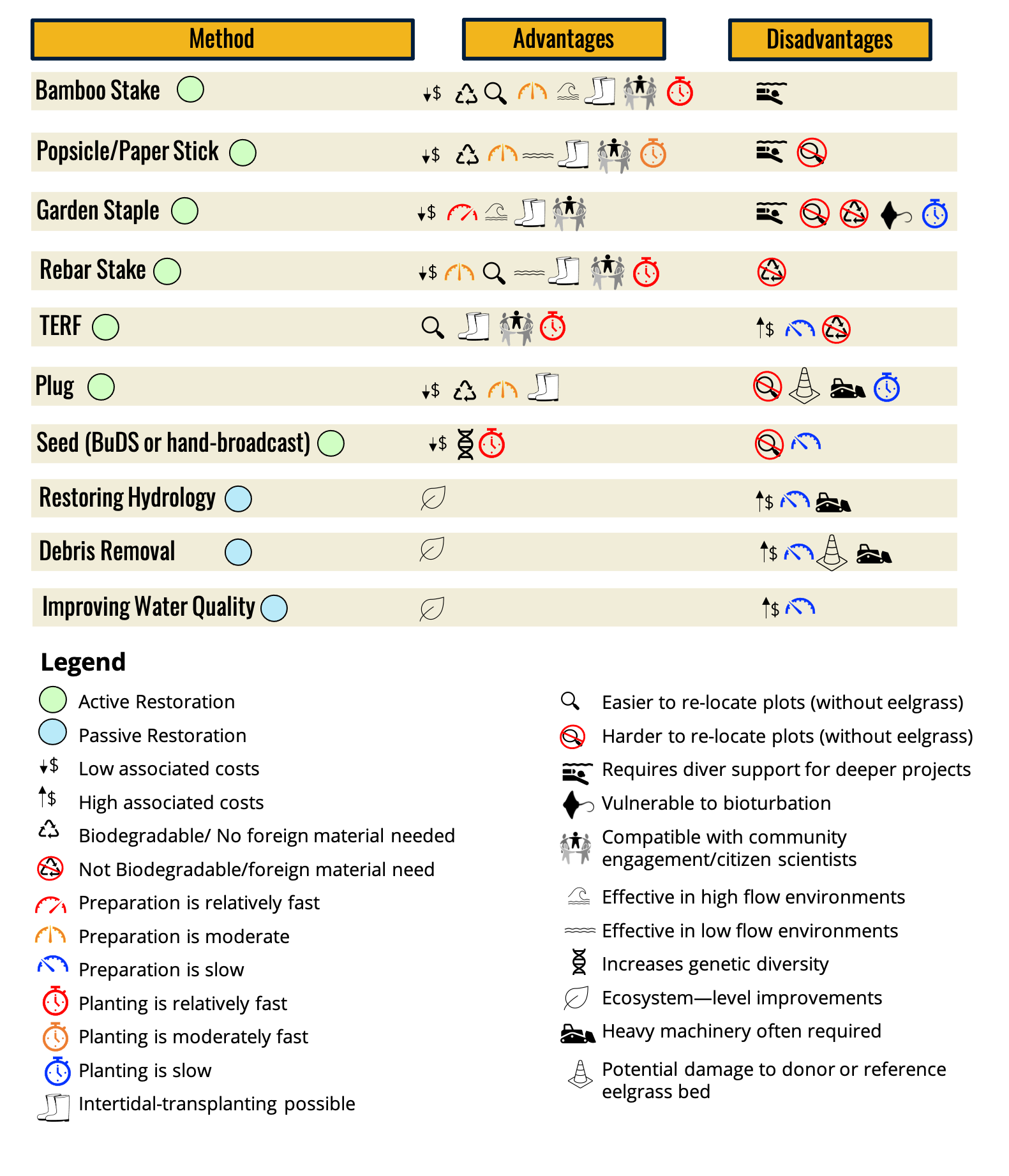 Restoration projects include both active (transplanting and seeding) or passive (debris removal, process-based restoration) approaches. Practitioners interviewed for this synthesis project identified advantages and disadvantages of different restoration methods. The methods descriptions below also reference projects that used these methods. Project data can be accessed below in the searchable project data table. Bare root transplanting – Using anchors such as garden staples, popsicle sticks, bamboo, or rebar stakes. Anchors are then pushed into the sediment along with the attached eelgrass roots and associated rhizomes. Projects 10, 11. Seeding – Conducted typically by buoy deployed seeding (BuDS), whereby collected seed was placed into mesh bags and tied to buoys to allow for natural spread. Hand broadcasting was also utilized, Seeding was often used as a secondary method to supplement restoration plots where shoots had been directly transplanted. Projects 19, 32-34 Plugs are transplanted plants in with the natural, donor meadow sediment retained around the eelgrass root and rhizosphere. TERFS feature numerous shoots secured to frames made of a variety of materials (e.g. vexar or metal), which are then placed onto the surface sediment. Unanchored techniques include either the hand burial of shoots directly into sediment, or the lack of subsurface anchor whereby shoots are tied to rebar which is left to sit on the sediment surface to let shoots naturally anchor themselves to the sediment.
Restoration projects include both active (transplanting and seeding) or passive (debris removal, process-based restoration) approaches. Practitioners interviewed for this synthesis project identified advantages and disadvantages of different restoration methods. The methods descriptions below also reference projects that used these methods. Project data can be accessed below in the searchable project data table. Bare root transplanting – Using anchors such as garden staples, popsicle sticks, bamboo, or rebar stakes. Anchors are then pushed into the sediment along with the attached eelgrass roots and associated rhizomes. Projects 10, 11. Seeding – Conducted typically by buoy deployed seeding (BuDS), whereby collected seed was placed into mesh bags and tied to buoys to allow for natural spread. Hand broadcasting was also utilized, Seeding was often used as a secondary method to supplement restoration plots where shoots had been directly transplanted. Projects 19, 32-34 Plugs are transplanted plants in with the natural, donor meadow sediment retained around the eelgrass root and rhizosphere. TERFS feature numerous shoots secured to frames made of a variety of materials (e.g. vexar or metal), which are then placed onto the surface sediment. Unanchored techniques include either the hand burial of shoots directly into sediment, or the lack of subsurface anchor whereby shoots are tied to rebar which is left to sit on the sediment surface to let shoots naturally anchor themselves to the sediment.
Evaluating Success
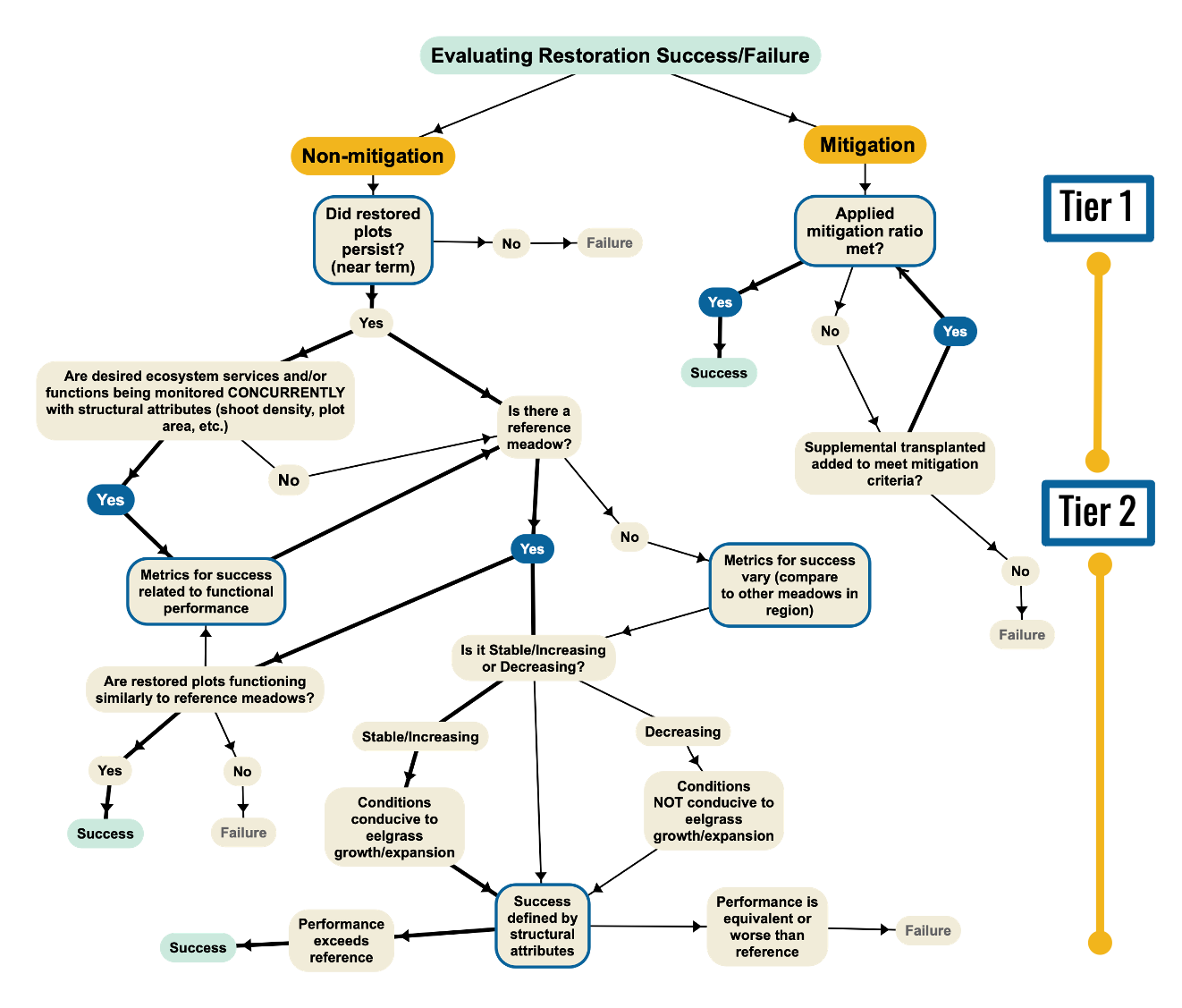 Broken into two ‘Tiers’, the first tier represents broad restoration success and/or failure at a very high level (i.e. did plots persist or were mitigation criteria met?). The second tier represents the nuance of restoration success/failure based on the status and/or presence of natural reference meadows, whether or not ecosystem services and functions are being assessed, and the relative performance of restored plot structural attributes (i.e., shoot density, plot area) compared to reference meadows. The flow diagram for mitigation projects is purposely circular since mitigation requires that practitioners meet the stated criteria. Typically, efforts continue until criteria are met (but see Project 16). Wider arrows indicate pathways to success.
Broken into two ‘Tiers’, the first tier represents broad restoration success and/or failure at a very high level (i.e. did plots persist or were mitigation criteria met?). The second tier represents the nuance of restoration success/failure based on the status and/or presence of natural reference meadows, whether or not ecosystem services and functions are being assessed, and the relative performance of restored plot structural attributes (i.e., shoot density, plot area) compared to reference meadows. The flow diagram for mitigation projects is purposely circular since mitigation requires that practitioners meet the stated criteria. Typically, efforts continue until criteria are met (but see Project 16). Wider arrows indicate pathways to success.
Case Studies
Project Data
The Eelgrass Restoration Synthesis Table includes information about the 57 projects used in the report. Projects can be filtered by state, restoration type, method, and other attributes.

